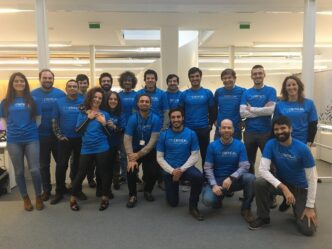MicroTransponder, a medical technology company focused on revolutionizing stroke rehabilitation, has raised $65 million in a Series F funding round. The investment aims to expand access to Vivistim, the company’s FDA-approved paired vagus nerve stimulation (VNS) system, which enhances recovery for stroke survivors.
The round was led by US Venture Partners (USVP) and included contributions from Osage University Partners, Action Potential Venture Capital, GPG Ventures, The Vertical Group, and Exceller Hunt Ventures. Also new investors Gilde Healthcare and Longitude Capital also joined the syndicate, signaling strong confidence in MicroTransponder’s innovative approach.
“The MicroTransponder leadership team is building the company in a thoughtful way to establish Vivistim as the new standard of care for stroke survivors,” said Casey Tansey, a general partner at USVP and a MicroTransponder board member. “We’re excited by the combination of commercial excellence and the overwhelmingly positive clinical outcomes that demonstrate significant improvements for stroke patients.”
How Vivistim Enhances Stroke Rehabilitation
Vivistim stands as the first and only FDA-approved paired VNS intervention, actively helping chronic ischemic stroke survivors regain motor function. The FDA’s Breakthrough Device Program approved Vivistim, an implanted device that therapists activate during high-repetition, goal-oriented therapy.
By pairing VNS with rehabilitation exercises, Vivistim promotes neuroplasticity, significantly improving hand and arm mobility in stroke survivors. Clinical studies show that Vivistim users experience two to three times greater upper-extremity function improvement compared to standard stroke therapy alone.
New real-world data presented at the 2025 International Stroke Conference (ISC) validated Vivistim’s effectiveness, complementing prior clinical trial results. These findings reinforce the device’s impact in comprehensive stroke recovery programs.
“Our team has successfully implemented Vivistim programs in 20% of Joint Commission Comprehensive Stroke Centers and 50% of Becker’s 2024 100 Great Neuro and Spine Programs,” said Richard Foust, CEO of MicroTransponder. “By collaborating with top healthcare providers, we are fundamentally reshaping stroke care and renewing hope for survivors and their families.”
With strong investor backing and growing adoption, MicroTransponder continues to integrate Vivistim as a key solution in stroke rehabilitation, actively transforming the recovery process for millions of patients.













